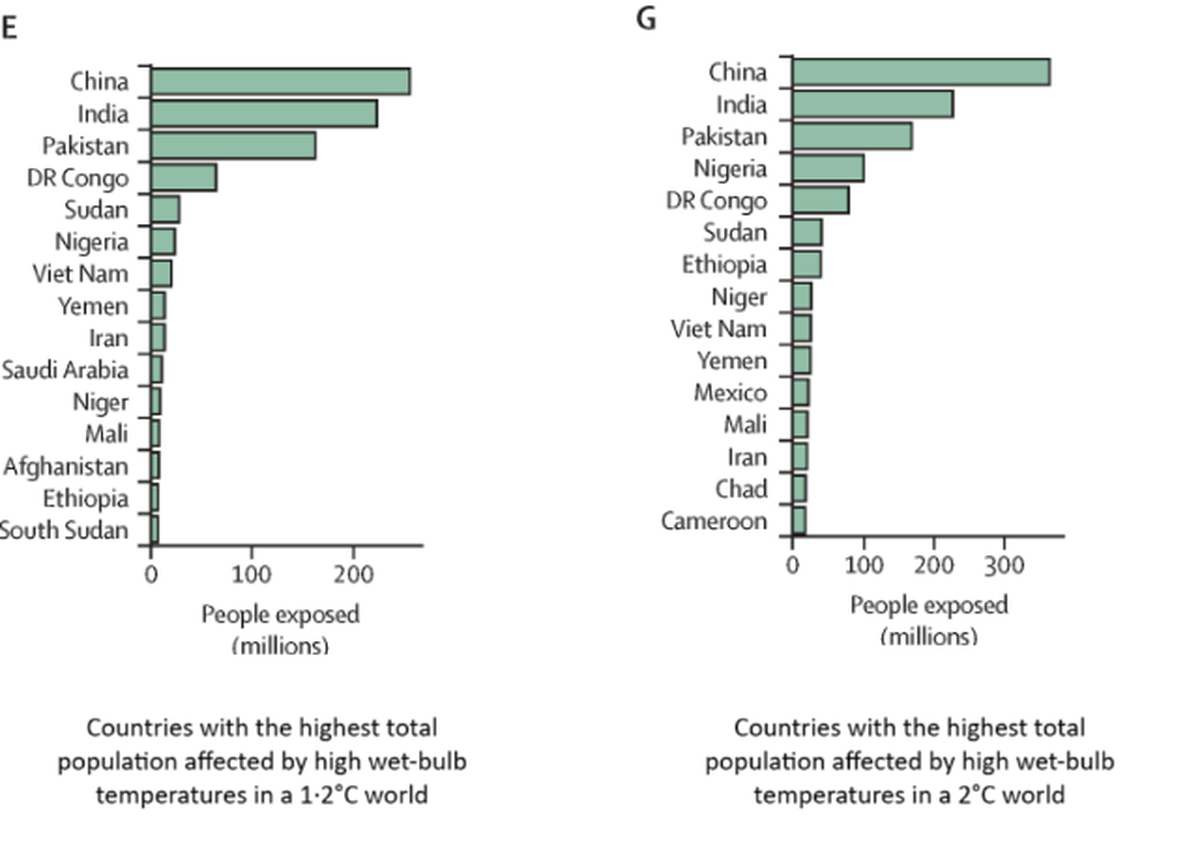
The Sunderbans delta, the world’s largest mangrove forest covering 26,000 sq. km in India and Bangladesh, is threatened by rising sea levels. Representative image.
| Photo Credit: AFP
India will have the most number of people exposed to mean annual temperatures higher than 29°C – the hot exposure metric – if global warming goes past by 1.5°C, a new study published in The Lancet Planetary Health journal has found.
Published on September 11, the study assessed safe and just earth-system boundaries (ESBs) to ensure sustainable human and planetary health.
ESBs are limits we shouldn’t cross in order to maintain the planet’s ability to support various ecosystems. Crossing an ESB could harm human populations as well.
The study reported that India, China, Europe, and the Americas led the world in accelerated loss of functional integrity over the last 50 years. Functional integrity of ecosystems is an ESB referring to the earth’s ability to maintain essential processes in its biospheres. It has already been crossed.
According to the study’s researchers, India tops the list of countries with the most number of people living with less than 20% functional integrity.
Under projected global warming of 2°C in 2100, they found India will also be the third-most vulnerable country to sea-level rise.
India also ranked high in the study vis-à-vis the size of the population exposed to extreme temperature if global warming continues unabated. Historically, human population density has been greatest when the mean annual temperature was 11°C-15°C. But with climate change, India will have the most people exposed to mean annual temperatures higher than 29°C if global warming crosses 1.5°C.
Large parts of South Asia, Southeast Asia, West Africa, and the Arabian Peninsula are expected to cross the 29°C mean annual temperature. While most greenhouse gas emissions responsible for this rise in temperature were caused by developed countries, these areas are projected to be the most affected by climate change as a result.
In fact, according to the study, the world’s richest 10% consume as much energy as the poorest 80%.
More than 200 million Indians will be exposed to high wet-bulb temperatures in a world warmer by 2°C world — the second-largest country-wise population group in the world. The first is in China

Countries most affected by high wet-bulb temperatures
| Photo Credit:
DOI: 10.1016/S2542-5196(24)00042-1
Many parts of India also grapple with high levels of human-induced phosphorus pollution, especially in surface water runoff. Sewage contributes more than 70% of phosphorus pollution in the Ganga river basin in parts of Bangladesh, China, India, and Nepal whereas agriculture contributes only 17%, according to the study.

Global anthropogenic phosphorus concentrations in surface water from agriculture, industrial, and domestic sources in 2002-2010
| Photo Credit:
DOI: 10.1016/S2542-5196(24)00042-1
Phosphorus is an essential micronutrient for plants and therefore crucial for food production, along with nitrogen. However, excess nutrient inputs can harm the health of people and ecosystems. Excess phosphorus can accumulate in soil and sediment particles through absorption or adsorption, preventing it from reaching crops, and creating requirement for more fertilizer. A part of excess phosphorus enters freshwater through runoff or soil erosion and is one of the main reasons of freshwater eutrophication, along with nitrogen.
Currently, phosphorus pollution is concentrated in east and south Asia, Europe, and North America, with some hotspots in southeast Asia, southern Africa, and South America. ESB targets related to phosphorus should use reduction in food waste, and improving sewage and wastewater quality as methods to focus on keeping the boundary in check, the research notes.
The study also reported that aerosols affect regional climate systems, and in India, they could have contributed to a decline in the amount of summer monsoon rainfall since the 1950s.
Previous studies have explored how sulphate aerosols injected into the stratosphere in the northern hemisphere could cause large deficits in Indian monsoon rainfall.
Among other pollutants, India also has the highest number of people exposed to PM2.5 above the suggested ESB, according to the study.
Published – September 14, 2024 05:25 pm IST





